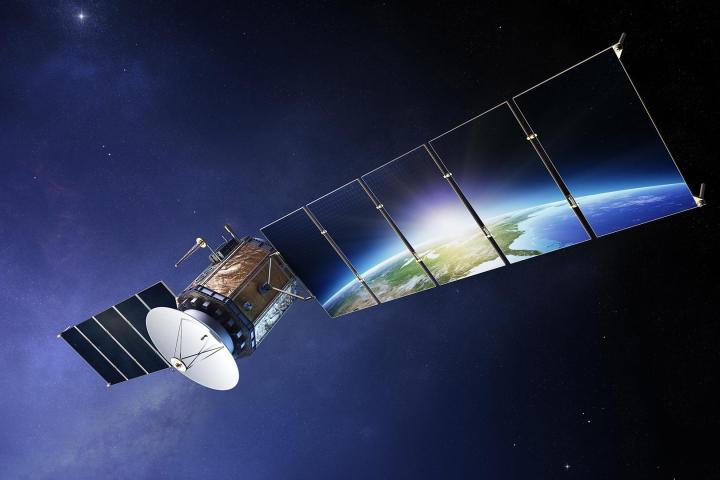
Penned by Samsung president of R&D Farooq Khan, in Dallas, Texas, his proposal titled “Mobile Internet from the Heavens” starts out by addressing the advantages of mobile connectivity, pointing out that companies should be better prepared for the presaged higher data demand in the coming years.

Experts predict that as smartphones grow even more pervasive, bandwidth requirements from consumers will double every five years. And if Khan’s proposed ideas ultimately come to fruition, the entire world could reap the benefits, alleviating concerns over increased mobile broadband consumption. Everybody wins, at least in theory.
Khan’s plan claims to offer up to one zetabyte of capacity per month. To achieve this goal, he hopes to deploy a large number of inexpensive Low Earth Orbit micro-satellites positioned about 1,500 kilometers from Earth’s surface, much lower than a typical geostationary satellite.
The reason for forgoing standard geostationary satellites in favor of these smaller, close-range instruments is due to the latency produced at typical altitudes of up to 35,786km. With so much space (literally) to travel, it can take a quarter of a second for a signal to ping back and forth from the satellite. This delay is much slower than many of us are accustomed to in 2015, potentially causing even the most patient customers to lose their minds due to annoyances like interrupted Skype calls and Xbox Live disruptions.
At the lower altitude described in Khan’s assessment, Samsung’s proposed Space Internet system would only incur latency of about two-tenths of a second. Notably, signal propagation is about 1.4x faster in space and in the air than with fiber optics, also contributing to the decreased delay.

On the downside, to provide coverage to the whole world, many more LEO satellites are required than would be the case with Geostationary satellites. Fortunately, Low Earth satellites cost less both to manufacture and deploy, making them the preferred option over their distant, more capacious counterparts. And with 5G tech on the horizon, we may see a single standard-based wireless technology allowing for satellite, cellular, and Wi-Fi connections, potentially making Samsung’s proposition even more affordable.
Samsung isn’t the first company to introduce plans for distributing Internet access on a global level. As we reported just a couple of weeks ago, Facebook has been toying with solar-powered Internet drones recently, while Google is investing $1 billion in SpaceX to carry out goals similar to the satellite-centric plans Samsung has rolled out. Even an unlikely partnership between companies like Virgin, Qualcomm, and Coca Cola has emerged with Oneweb, an ambitious satellite Internet project planned to arise by 2019.
So, with Samsung clearly not alone in its train of thought, is this really that big a deal? Absolutely! Khan’s proposed Low Earth Orbit satellites enable faster speeds of up to one terabyte per second for each device, thanks to its close proximity and reliance on purposed 5G connectivity. Dish Network’s “dishNet” offers only up to 15 Mbps and caps out at 50GB worth of downloads, attached to a hefty $80 bill each month. With Samsung’s Space Internet, costs would drop significantly while allowing for even more and, not to mention, faster downloads.
Samsung’s satellite network could handle up to a zetabyte of data per month.
Regardless of who it comes from, lower cost Internet is always an exciting prospect, especially considering many regions are either disillusioned by the monopolistic practices of behemoth corporations such as Comcast or are not given any affordable networking solutions at all. There are still many places in the world where the Internet is not easy to access, and rolling out fiber to such locations is rarely feasible.
With Samsung joining the likes of Facebook and Google in the race to Internet space, the competition is heating up to bring the fastest, most economical options to you. Thankfully, rivalries in innovation almost always engender fascinating results.
Editors' Recommendations
- NASA plans to cut cost of space exploration by commercializing low-earth orbit
- Drift car champ uses Samsung phone and Vodafone’s 5G to do what he does best


